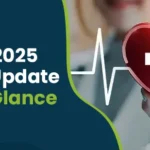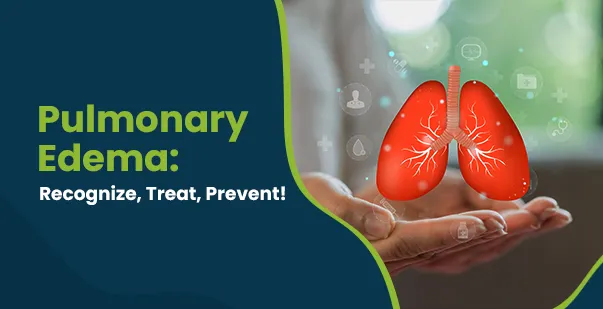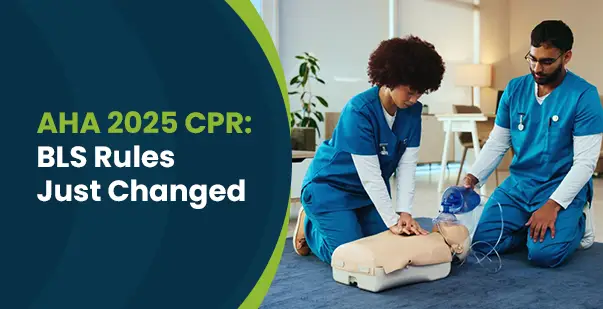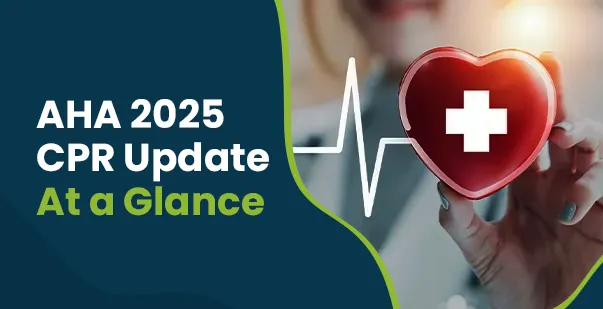Difficulty in breathing is a common complaint among people these days amidst rising pollution globally. However, if you constantly struggle to breathe and it becomes worse when you lie down, it could be a sign of pulmonary edema!
Pulmonary Edema is a life-threatening medical condition that affects your lungs. More than 1 million patients are admitted each year with a diagnosis of pulmonary edema. It occurs when fluid accumulates in your lungs’s air sacs (alveoli). As a result, you may face difficulty breathing and respiratory distress. Read on to learn more about pulmonary edema, its definition, common signs and symptoms, and ideal treatment approaches.
What is Pulmonary Edema?
Pulmonary Edema is a condition characterized by the build-up of fluid in the lungs, which makes it difficult for you to breathe. It happens when your heart is not able to pump blood properly or when there is any injury/ damage to your lungs. The abnormal fluid buildup will affect your body’s ability to inhale adequate oxygen into the blood and cannot get rid of the carbon dioxide.
Your lung is like a sponge that absorbs oxygen and releases carbon dioxide during the respiration process to facilitate seamless gas exchange. The lung, as a sponge, will become saturated with water when affected by pulmonary edema. As a result, instead of allowing the oxygen into your bloodstream, the alveoli (air sac) will get filled with fluids, impeding the transfer of oxygen.
Early detection of pulmonary edema helps prevent further damage to the lungs and other organs, which ultimately improves the chances of successful treatment. If not diagnosed and treated early, pulmonary edema can lead to respiratory failure and severe complications.
Types of Pulmonary Edema
Each type of pulmonary edema has its own comprehensive evaluation and appropriate intervention. Depending on how quickly the condition sets in and the causes behind it, pulmonary edema can be categorized into the following categories.
Here’s a brief comparison table highlighting the differences between the types of pulmonary edema:
| Aspect | Cardiogenic Pulmonary Edema | Non-Cardiogenic Pulmonary Edema |
| Cause | Caused by heart-related issues like heart failure, myocardial infarction, or mitral valve disease. | Caused by factors like trauma, infection, inhalation of toxins, or ARDS. |
| Onset | Typically gradual, often linked to worsening heart function. | Rapid onset that is often sudden and can develop in minutes to hours. |
| Symptoms | Shortness of breath, orthopnea, paroxysmal nocturnal dyspnea, fatigue, and chest pain. | Severe shortness of breath, hypoxemia, and sometimes hemoptysis. |
| Fluid Accumulation | Fluid buildup primarily in the alveolar spaces due to increased pressure from the heart. | Fluid buildup in the alveolar spaces due to increased permeability of the lung capillaries. |
| X-ray Findings | Bilateral pulmonary infiltrates, Kerley B lines, enlarged heart. | Pulmonary infiltrates without heart enlargement, often more diffuse. |
| Treatment | Diuretics, vasodilators, inotropic agents, and managing the underlying cardiac condition. | Treatment of underlying cause (e.g., antibiotics for infection, steroids for ARDS), oxygen therapy. |
Cardiogenic Pulmonary Edema
Cardiogenic pulmonary edema occurs due to a problem in the heart’s ability to pump blood effectively. When the left ventricle weakens or fails, it cannot move oxygen-rich blood efficiently, causing fluid to back up into the lungs. Common causes include high blood pressure, coronary artery disease, weakened heart muscles (cardiomyopathy), or irregular heart rhythms (arrhythmias). This type of pulmonary edema is directly linked to heart-related conditions and requires immediate attention to manage the underlying heart problem.
Non-Cardiogenic Pulmonary Edema
Non-cardiogenic pulmonary edema results from lung issues rather than heart failure. In this type, damage to lung capillaries leads to fluid leakage into the air sacs (alveoli). It occurs due to severe trauma, infections like pneumonia, inhalation of toxic fumes, near-drowning incidents, or seizures. The condition disrupts the lungs’ ability to exchange gases, leading to breathing difficulties. Unlike cardiogenic edema, it is not caused by heart dysfunction but rather by direct injury or stress to the lungs.
Acute Pulmonary Edema
Acute Pulmonary Edema constitutes an emergency that requires immediate medical care. The symptoms of the condition may appear suddenly and can be extremely severe. It includes sudden onset of severe breathing problems, anxiety, and rapid heartbeat. It often occurs in response to a sudden heart failure event, trauma, or severe lung injury.
Chronic Pulmonary Edema
Chronic pulmonary edema develops gradually over time and is typically linked to long-term underlying conditions, such as congestive heart failure or chronic kidney disease. Unlike acute pulmonary edema, which occurs suddenly, chronic pulmonary edema progresses more slowly and may initially go unnoticed. Symptoms include persistent shortness of breath, swelling in the legs or ankles, fatigue, and gradual weight gain due to fluid retention. People with chronic pulmonary edema often have trouble breathing during physical activity or even when lying flat.
Acute pulmonary edema is usually triggered by a sudden event such as a heart attack, high blood pressure crisis, or severe lung injury, whereas chronic pulmonary edema stems from long-standing health issues. Risk factors for chronic cases include long-term hypertension, valve disorders, kidney dysfunction, and poorly controlled diabetes. If left untreated, chronic pulmonary edema can still become life-threatening over time.
What Pulmonary Edema Symptoms One Should Watch For?
The pulmonary edema symptoms and signs tend to vary depending on the severity of the condition. Moreover, the condition can manifest acutely or develop gradually. Here are some common symptoms to look out for:
- Dyspnea (Shortness of breath)
As the pressure in your blood vessels increases, fluid will be filled in the air spaces (alveoli) in the lungs. The accumulation of fluid will affect the normal oxygen movement through the lungs. As a result, you may experience difficulty breathing, such as a feeling of breathlessness or air hunger.
- Orthopnea
Individuals with pulmonary edema experience orthopnea when their lungs become stiff. It will affect the ability of the lungs to stretch and expand to breathe in air effectively. The symptom particularly happens when you are lying down.
- Coughing and Wheezing
When you have pulmonary edema, you will experience a persistent cough with frothy or pink-tinged sputum, which might worsen when lying down. Coughing develops as a reaction to irritation from excess fluid in the lungs.
Wheezing is a high-pitched whistling sound during breathing. It occurs in pulmonary edema when air moves through narrowed breathing tubes in the lungs due to excess fluid accumulation.
- Tachypnea
Pulmonary edema presents initially with crackles, wheezing, and dry cough and slowly progresses to tachypnea. With the symptom, you will experience rapid breathing or increased respiratory rate as your body attempts to compensate for the reduced oxygen level.
- Cyanosis
Pulmonary edema prevents oxygen from entering the blood, which can lead to cyanosis. You will experience bluish-discolored skin, especially around the lips and fingertips, due to insufficient oxygenation.
- Anxiety
Anxiety is a common feature in the early course of pulmonary edema. You will experience the Feelings of restlessness or a sense of impending doom, indicating the severity of the respiratory stress.
- Tachycardia
When a diseased or overworked left lower heart chamber (left ventricle) can’t pump out enough of the blood it gets from the lungs, it will lead to tachycardia, an elevated heart rate as the heart beats faster to pump blood against the resistance in the lungs.
Read More: Tachycardia: Symptoms, Causes and Heart Rate Explained
What Are The Major Causes of Pulmonary Edema?
Pulmonary edema happens due to different causes, including both heart-related and non-related conditions. Learning the underlying causes will help you gain valuable insights into the factors that contribute to the condition. Below are some of the common causes of pulmonary edema.
Cardiovascular Conditions
If the heart cannot pump blood effectively from the lungs, pressure builds up in the pulmonary vessels. This increased pressure forces fluid from the blood vessels into the air sacs (alveoli). Over 1 million people a year are affected by pulmonary edema due to a heart condition. Some of the cardiovascular causes for the condition are:
Coronary Artery Diseases
Due to the excess accumulation of fatty substances (plaque), coronary arteries (supply blood to heart muscles) get narrowed down. It can block the blood flow and damage a part of your heart muscle, leading to a heart attack.
Cardiomyopathy
Cardiomyopathy refers to the damage to heart muscles, where your heart has to pump harder, which increases the blood pressure. When it cannot keep up with the demands, fluid will build up in your lungs.
Heart Valve Problems
Narrowing of the aortic or mitral heart valves affects the blood flow into the heart. In such circumstances, the heart has to work harder, which further increases the blood pressure level. If the valve leakage occurs suddenly, the fluid will build up, and you might develop severe and sudden pulmonary edema.
Acute Respiratory Distress Syndrome (ARDS)
ARDS is a serious disorder that happens when your lungs suddenly fill with fluid and inflamed white blood cells. The condition is usually caused by severe injury (Trauma) from a severe blow or penetrating object, widespread sepsis (infection), pneumonia, and severe bleeding. These factors will contribute to fluid build-up in your lungs, resulting in pulmonary edema.
Kidney Failure
High blood pressure due to narrowed arteries in the kidney (renal artery stenosis) leads to kidney failure. When the kidneys are unable to remove the excess fluid and waste from the body effectively, it leads to the accumulation of fluid in various tissues, including the lungs.
Near Drowning
Inhaling water causes fluid buildup in the lungs, which can also result in pulmonary edema. The near-drowning episode will create a blockage in your airways due to the intense efforts to breathe. However, the condition is reversible and most people recover in about 24 hours after immediate care.
Ingesting or inhaling saltwater can worsen pulmonary edema. Saltwater is hypertonic, meaning it has a higher concentration of solutes (like sodium) compared to the blood. When saltwater enters the lungs or is aspirated, it can draw water out of the bloodstream into the alveoli (the tiny air sacs in the lungs), making it harder for oxygen to transfer into the blood. This exacerbates fluid accumulation in the lungs and worsens the condition.
Freshwater, on the other hand, is hypotonic (lower solute concentration compared to the blood). When fresh water is aspirated or inhaled into the lungs, it can lead to a different physiological response. Freshwater dilutes the blood’s concentration, which can cause red blood cells to burst (hemolysis). This can result in the release of hemoglobin, further aggravating lung injury and edema.
Nervous System Damage or Conditions
Neurological disorders can significantly impact respiratory control and fluid regulation in the body, leading to pulmonary edema. For example, a stroke, particularly in the brainstem region, can impair respiratory drive, while traumatic brain injury (TBI) may disrupt autonomic regulation of the cardiovascular system, causing abnormal fluid shifts.
Other conditions such as Guillain-Barré syndrome, multiple sclerosis, and amyotrophic lateral sclerosis (ALS) may weaken respiratory muscles or affect neurological pathways that control breathing. These disruptions can lead to inadequate oxygen exchange and fluid accumulation in the lungs. Additionally, seizures or conditions that elevate intracranial pressure may trigger a rare but serious complication known as neurogenic pulmonary edema.
Lung Conditions
Chronic lung issues, such as chronic obstructive pulmonary disease (COPD) or pneumonia, can inflame lung tissues. This inflammation weakens the lungs’ ability to function and increases the risk of fluid leakage.
What Techniques Are Used To Diagnose Pulmonary Edema?
If your healthcare professional suspects that you have pulmonary edema, they may look for fluid in your lungs and assess the symptoms caused by it. Such a quick diagnosis will help you receive timely and appropriate intervention. Following are the key approaches that your doctor will adopt to diagnose pulmonary edema:
Clinical Assessment
Your healthcare professional will inquire about your symptoms, including any chest pain, coughing, breathing difficulties, or swelling in your leg or feet. They will analyze your medical history, including any pre-existing conditions such as high blood pressure, heart disease, and kidney problems.
After accessing your medical history, your doctor will perform a comprehensive medical examination. They will analyze you for the following:
- Crackles (rales) heard on auscultation of the lungs, a hallmark of fluid accumulation.
- Tachypnea (rapid breathing) and tachycardia (increased heart rate) are often present.
- Cyanosis (bluish discoloration of lips or extremities) indicates low oxygen levels.
- Elevated jugular venous pressure (JVP), especially in heart failure-related pulmonary edema, suggests fluid overload.
- Peripheral edema, such as swollen legs, may suggest fluid retention and congestive heart failure.
Imaging Tests
To get a precise indication of the condition, your healthcare professional might recommend the following diagnostic tests such as,
- Chest X-ray to reveal any signs of fluid in the lungs, such as an enlarged heart which occurs due to edema.
- An electrocardiogram (ECG) records the electrical activity of your heart and detects any abnormalities in the rhythm or function. It might indicate left ventricular failure, deep negative T waves and QT prolongation, Non-specific ST segment, and T wave changes.
- Echocardiogram, or cardiac ultrasound to create images of your heart using sound waves to assess its structure and function. It assesses the severity of the condition by determining the cardiac or non-cardiac causes.
Laboratory Tests
Lab tests help identify underlying issues contributing to pulmonary edema and monitor the body’s response to treatment. The common laboratory tests conducted to find the main cause of pulmonary edema are as follows:
- Blood tests are conducted to analyze signs of heart failure, including elevated levels of certain enzymes or markers. Common blood tests include complete blood count, blood chemistries, an electrolyte panel, and B-type natriuretic peptide (BNP).
- The Arterial Blood Gas (ABG) test measures the respiratory compromise caused by pulmonary edema. It helps determine the severity of oxygen deprivation and guides the physician in managing respiratory support, such as the need for supplemental oxygen, non-invasive ventilation (e.g., CPAP), or invasive mechanical ventilation. ABG also helps monitor the response to treatment, particularly in severe cases.
- BNP and NT-proBNP biomarkers are particularly useful in differentiating between cardiac and non-cardiac causes of pulmonary edema. Elevated levels suggest heart failure, which is the most common cause, helping to narrow down the diagnostic possibilities.
How is Pulmonary Edema Treated?
Treatment for pulmonary edema aims to relieve symptoms and improve the lung’s function. However, the approach tends to vary based on the cause, symptoms, and medical history of the patient. Some of the effective treatment options include the following:
Medications
Medications are usually prescribed to stabilize the function of your heart and lungs while addressing the underlying cause. Some of the medications that are used to treat pulmonary edema are,
- Diuretics flush sodium and excess fluid from the body and flow while reducing blood pressure.
- Vasodilators expand the blood vessels and drain the excess liquid.
- Antibiotics to control the spread of the infection.
- Corticosteroids to treat inflammatory conditions that contribute to pulmonary edema
Keep in mind that these drugs can potentially cause side effects, which vary from person to person. Common side effects may include gastrointestinal issues, mood changes, allergic reactions, and more. Always consult a healthcare provider to ensure it is appropriate and safe for your specific health conditions.
Oxygen Therapy
To manage the symptoms better, your healthcare professional recommends oxygen therapy through a supplemental mask to ensure continuous positive airway pressure. Adequate respiratory support will facilitate better breathing and improve oxygenation. The delivery methods are,
- Nasal Cannula: A nasal cannula is a simple and non-invasive device that delivers oxygen through two small prongs placed in the nostrils. It is commonly used in mild cases of pulmonary edema where the patient has stable oxygen levels but requires supplemental oxygen to maintain appropriate saturation.
- Continuous Positive Airway Pressure (CPAP): CPAP is a non-invasive ventilation method that provides continuous positive airway pressure throughout the respiratory cycle, helping to keep the airways open and reduce the effort of breathing.
- Mechanical Ventilation (Invasive): When non-invasive methods are insufficient, mechanical ventilation with an endotracheal tube may be necessary, particularly in patients with severe respiratory failure or when they are unable to maintain their airway.
Surgical Procedures
Surgical procedures are performed when pulmonary edema is caused by heart disease or heart failure. Coronary angioplasty is a common surgical procedure that helps in treating cardiogenic pulmonary edema. The procedure uses a balloon to open up the blocked arteries to restore blood flow to the heart muscle.
Extracorporeal Membrane Oxygenation (ECMO)
ECMO is a life-saving treatment used in severe cases of pulmonary edema when conventional therapies such as oxygen support, diuretics, or mechanical ventilation are no longer effective. This treatment works by temporarily taking over the function of the heart and lungs, giving these organs time to recover.
The procedure involves inserting large cannulas (tubes) into major blood vessels, usually in the neck or groin. Blood is drawn from the body and sent through the ECMO machine, where it is oxygenated and carbon dioxide is removed. The oxygen-rich blood is then returned to the body, ensuring the organs and tissues receive the oxygen they need.
In patients with severe pulmonary edema, ECMO provides respiratory support by bypassing the fluid-filled lungs. This allows the lungs time to heal while medical treatments, such as medications to reduce fluid buildup or manage underlying conditions, are administered. ECMO is typically used in critical care settings for patients who are at high risk of death due to respiratory failure. While it is highly effective in stabilizing critically ill patients, ECMO is considered a temporary solution and is only used when all other treatment options have been exhausted.
Ways to Manage and Prevent Pulmonary Edema
While swift treatment increases the survival rate of pulmonary edema, it is important to avoid the triggers and address the underlying causes that might exacerbate the condition. Below are some of the common preventive measures to protect your lung health and lower the risk of developing pulmonary edema:
- Manage underlying medical problems like heart failure, kidney disease, and lung problems to reduce the fluid buildup in your lungs.
- Avoid excessive consumption of alcohol and tobacco to protect your lungs.
- Monitor your medications, report any unusual symptoms, and discuss concerns with your healthcare professional.
- Be careful about fluid intake and follow the limit level recommended by your doctor.
- Prevent infection by practicing excellent hygiene, proper training, and getting vaccinated.
- Engage in routine medical checkups to keep track of your health and sport any underlying disorders early.
- Monitor salt intake and aim to consume less than 2,300 milligrams of sodium per day (or even less if recommended by a healthcare provider). Focus on whole foods and minimize processed foods, which are often high in sodium.
- Certain populations are more vulnerable to pulmonary edema and should take extra precautions. People living or working at high altitudes should be aware of altitude-related pulmonary complications and take time to acclimate properly.
- Individuals with chronic conditions such as high blood pressure, diabetes, or kidney dysfunction must work closely with their doctors to manage these diseases effectively and reduce the risk of fluid accumulation in the lungs.
- Use wearables that track heart rate. They can provide valuable insight into how the heart is functioning, potentially signaling the early stages of pulmonary edema.
- Incorporate a healthy lifestyle, including a balanced diet, regular exercise, managing stress, and getting adequate sleep.
Read more: 10 Natural Tips for Quick Heart Health Improvement
Protect Your Respiratory Health!
Certain respiratory conditions need specialized attention as they can disrupt the delicate balance of our body’s functions. Pulmonary edema is one such condition with certain challenges that severely affect normal breathing patterns. The condition is characterized by the abnormal accumulation of fluid in your lungs, interfering with the ability to exchange life-sustaining gases. If you or your loved one experiences the symptoms of the condition, seek immediate diagnosis to get a timely and effective management plan. Moreover, you should also enroll in a basic life support course to stay prepared for any respiratory emergency arising due to pulmonary edema.
Frequently Asked Questions (FAQs)
- What is the main cause of pulmonary edema?
The primary cause of pulmonary edema is congestive heart failure, accompanied by symptoms such as shortness of breath and difficulty in breathing. The condition occurs when your heart cannot pump blood efficiently, causing the blood to accumulate back in the blood vessels in the lungs. It will create excess pressure and force fluid into the air sacs (alveoli) of the lungs.
- How to avoid pulmonary edema?
You can not completely prevent the occurrence of pulmonary edema. However, since the cardiovascular condition is the main cause of the condition, you can maintain your heart health through proper lifestyle changes. Take medications and Get routine vaccination (for pneumonia or flu). Visit your healthcare provider regularly if you have breathing difficulties.
- How much water should I drink with pulmonary edema?
You can follow your healthcare professional’s directions about how much liquid you should consume each day. The exact amount of water to consume with pulmonary edema varies depending on the severity of the condition and the medications you have been taking. For instance, individuals with flash pulmonary edema should limit their water intake to 1.5-2 liters per day.
- What is the survival rate for pulmonary edema?
A study shows that with a median hospital stay, 132 patients were discharged home, resulting in a 60% survival rate for pulmonary edema. The survival rate might vary depending on the type of the condition and other factors. For instance, pulmonary edema that develops suddenly (acute pulmonary edema) is a medical emergency that demands immediate care. When left untreated, the condition can sometimes cause death. However, with quick treatment along with additional oxygen and medications, your lungs can recover and function normally again in six months or a year.









